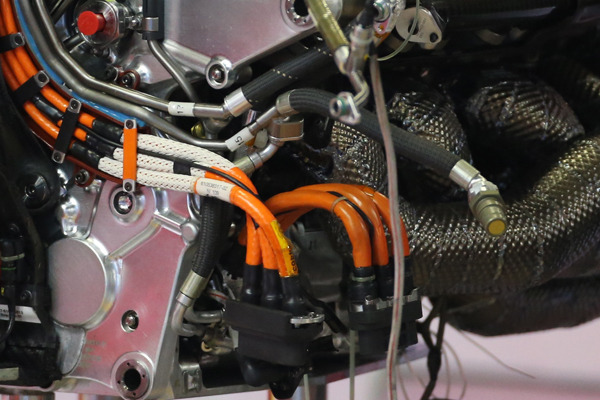TEAM BUILDER
Bell’s second stint at Enstone was highly successful, as the potent association of Fernando Alonso and his 2005-spec, Michelin-shod R25 as well as its 2006 predecessor – the R26 – combined for a pair of world championship doubles.
The next two campaigns proved to be tougher, as Renault struggled to adapt to its new Bridgestone tyres after the Japanese manufacturer became F1’s sole supplier. The French constructor reached its nadir in 2009 when managing director Flavio Briatore and Symonds, then director of engineering, resigned after Renault was charged with conspiracy in the wake of the Crashgate scandal.
Bell stepped up to become managing director for the remainder of the 2009 season, where Renault finished a lowly ninth in the Constructors’ standings, and most of the following campaign when the team bounced back to fourth. He then left Renault for Mercedes in October 2010, with James Allison taking over at the helm in Enstone.
For three years, Bell laid the groundwork for what would become one of the most dominant outfits in F1 history.
FOSTERING GROUP WORK OVER INDIVIDUAL ENDEAVOUR
After leaving Mercedes, Bell worked as a technical consultant for Manor in 2015 until Renault managing director Cyril Abiteboul, who knows the Ulsterman well, discreetly assigned him the task to study a potential return as a works team the following season. That’s how Bell came to open a third chapter in his Enstone career, once again taking up a prominent role in the team’s technical department.
“I suppose it is a theme – apart from moving teams, but that is probably another theme… [Laughs]. Something I have always tried is getting insular. I have tried to see different things, to experience different approaches…
“I love working with people, I love the sort of people that inhabit Formula One from all aspects of it, and I love the engineering challenges within it.
“I mean at heart I’m a designer, at heart I love nothing more than thinking about how something can be designed to be better, but I actually get the opportunity to do that very little, and that has been the way for many years.
“But because I enjoy working with people, I enjoy seeing the best come from people, and how can people get the best from themselves, then I love a role where I can help to organise teams of people, put things in place to make that team of people deliver more.
“You have to push yourself quite hard to find an extra ten percent in your ability, but if you get another one percent of a hundred people, you’re way better off than what you can get out of yourself.
“So I have always taken the view that what we need to push is the organisation, to get a little bit more out of everybody. I think technical understanding and leadership, management are both important. Exactly where you sit in that spectrum depends on the individuals.
“I tend to sit more towards the management side of things, probably like [Red Bull and F1 design genius] Adrian [Newey] tends to sit more towards the hands-on design side of things. Both are equally valid, both can be successful: it depends on the person.”








